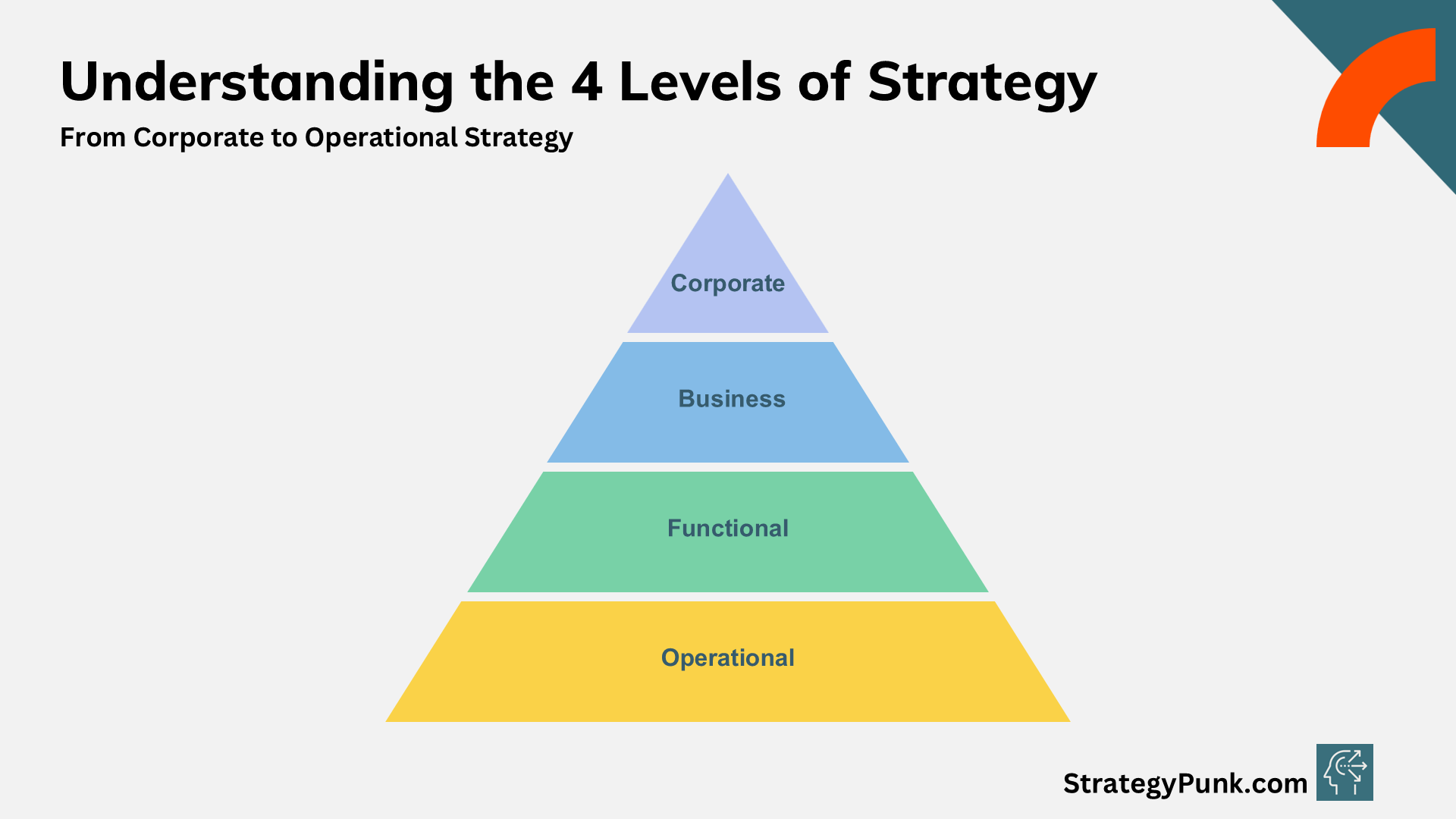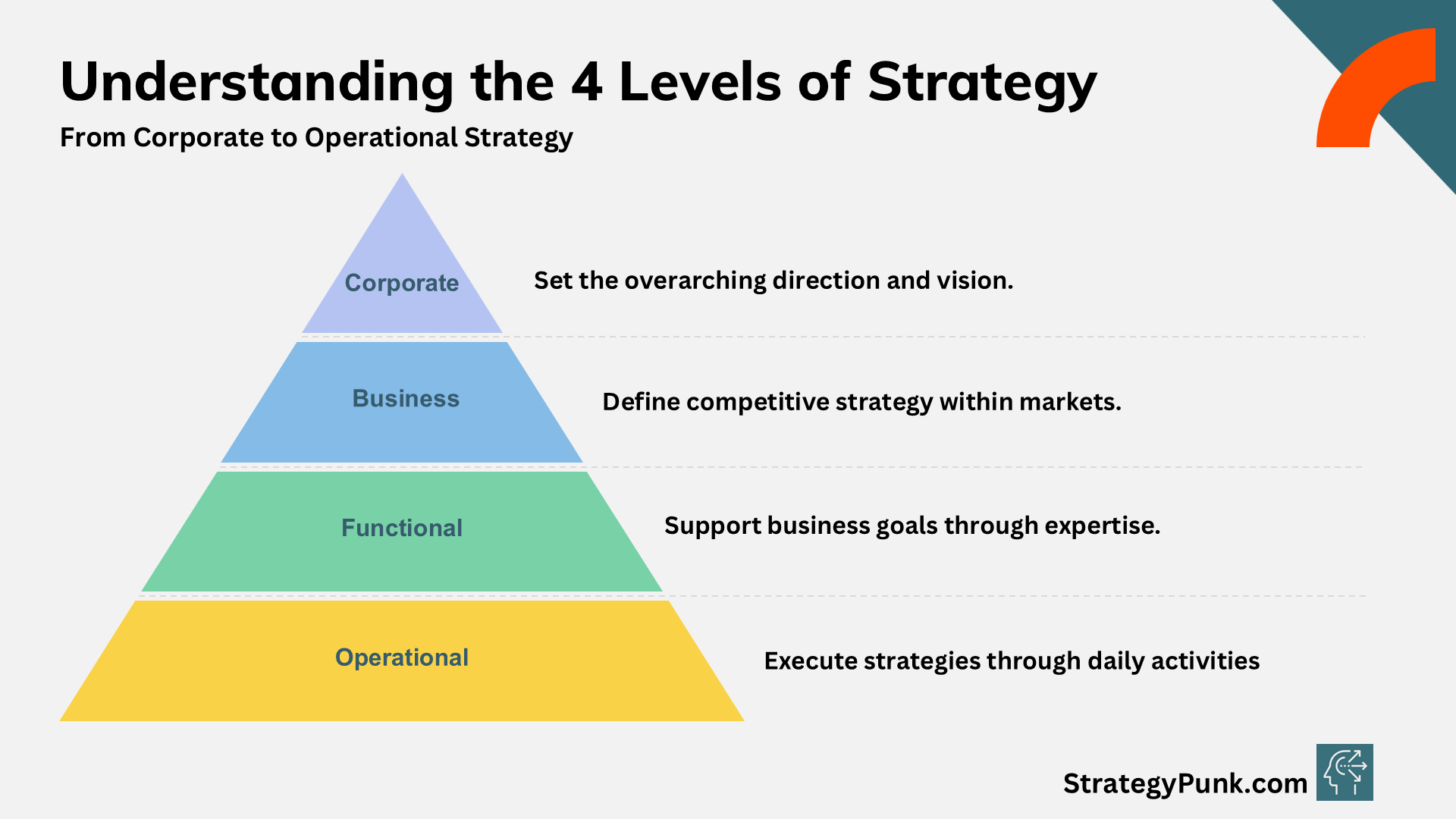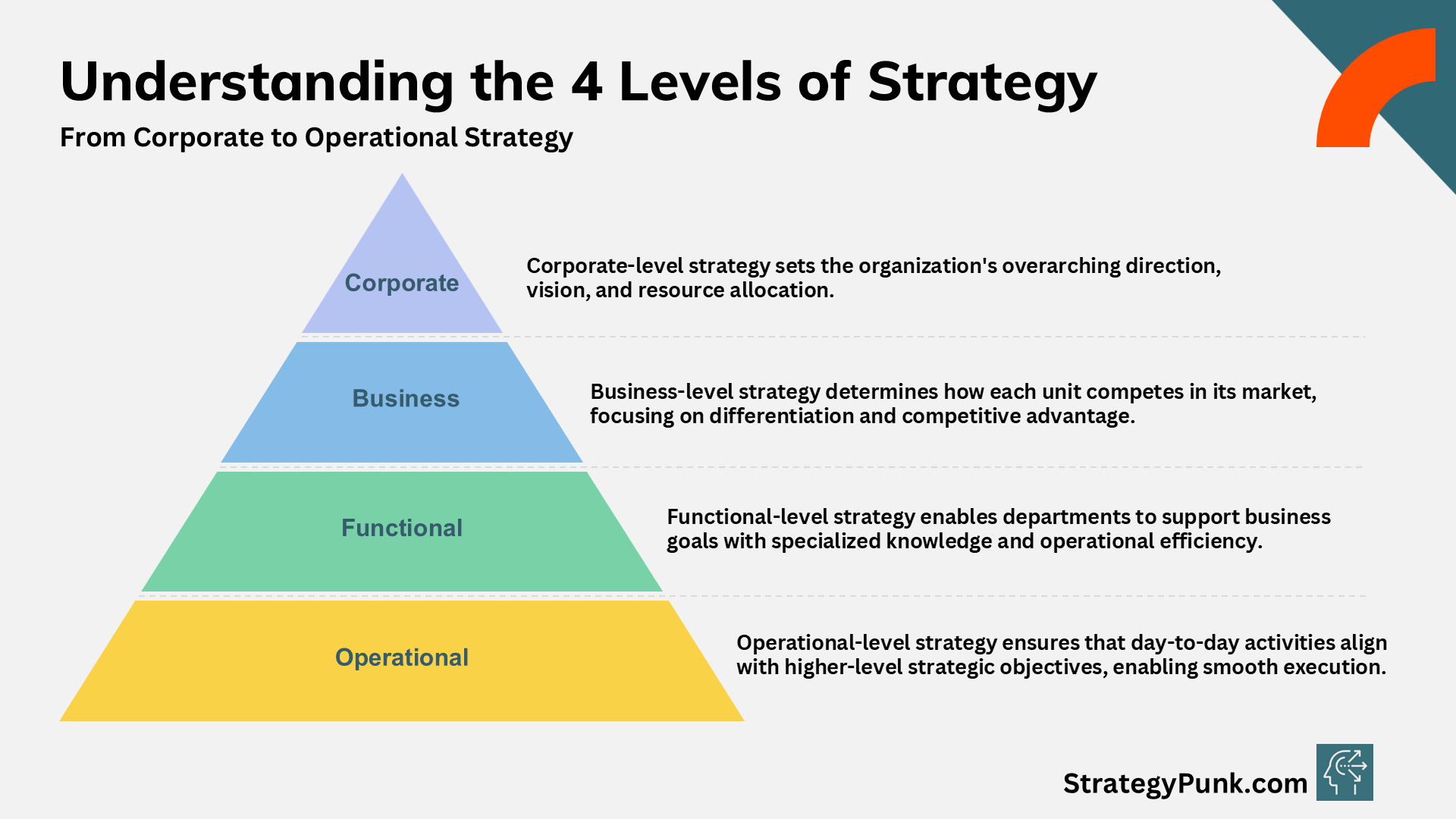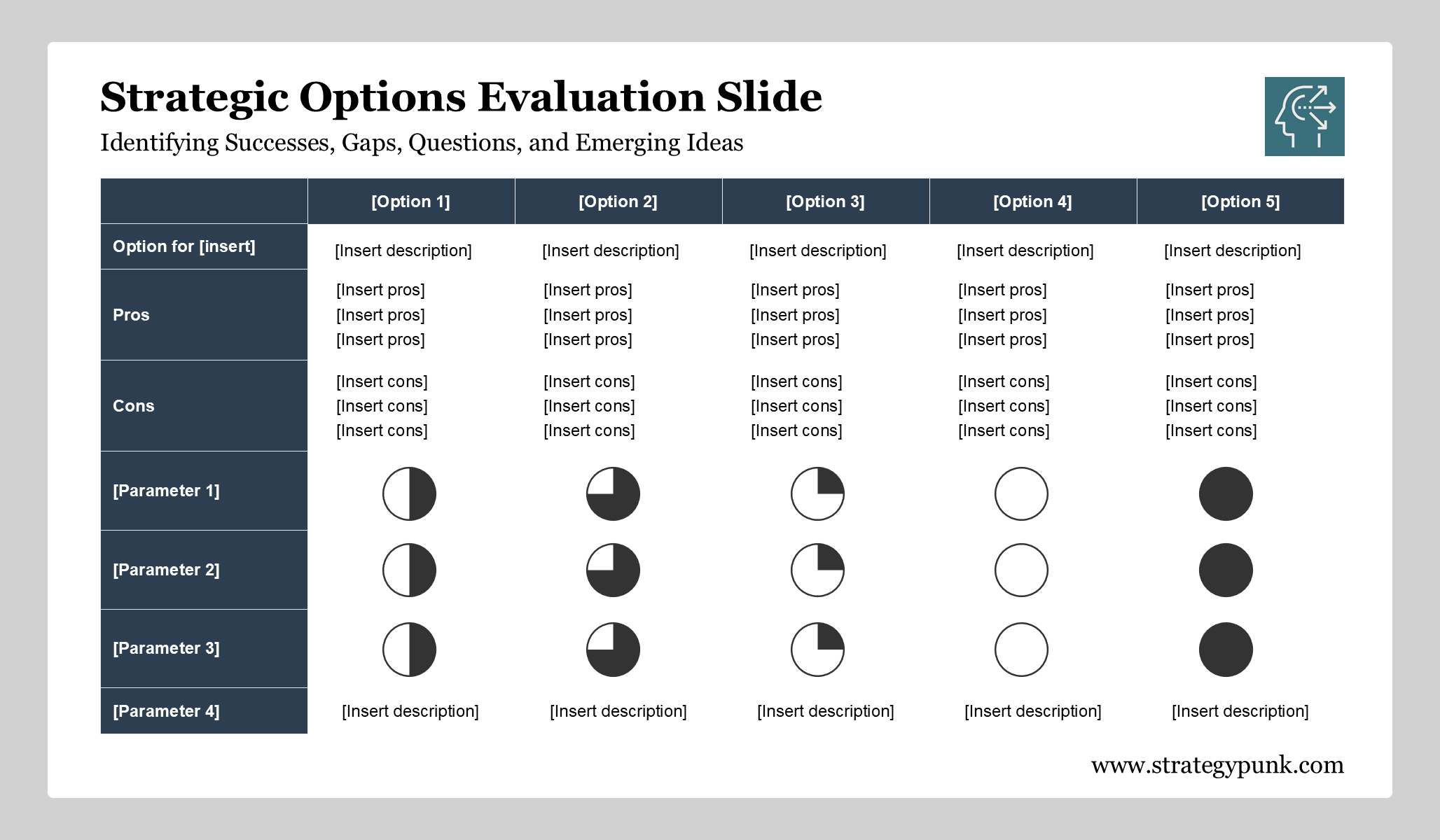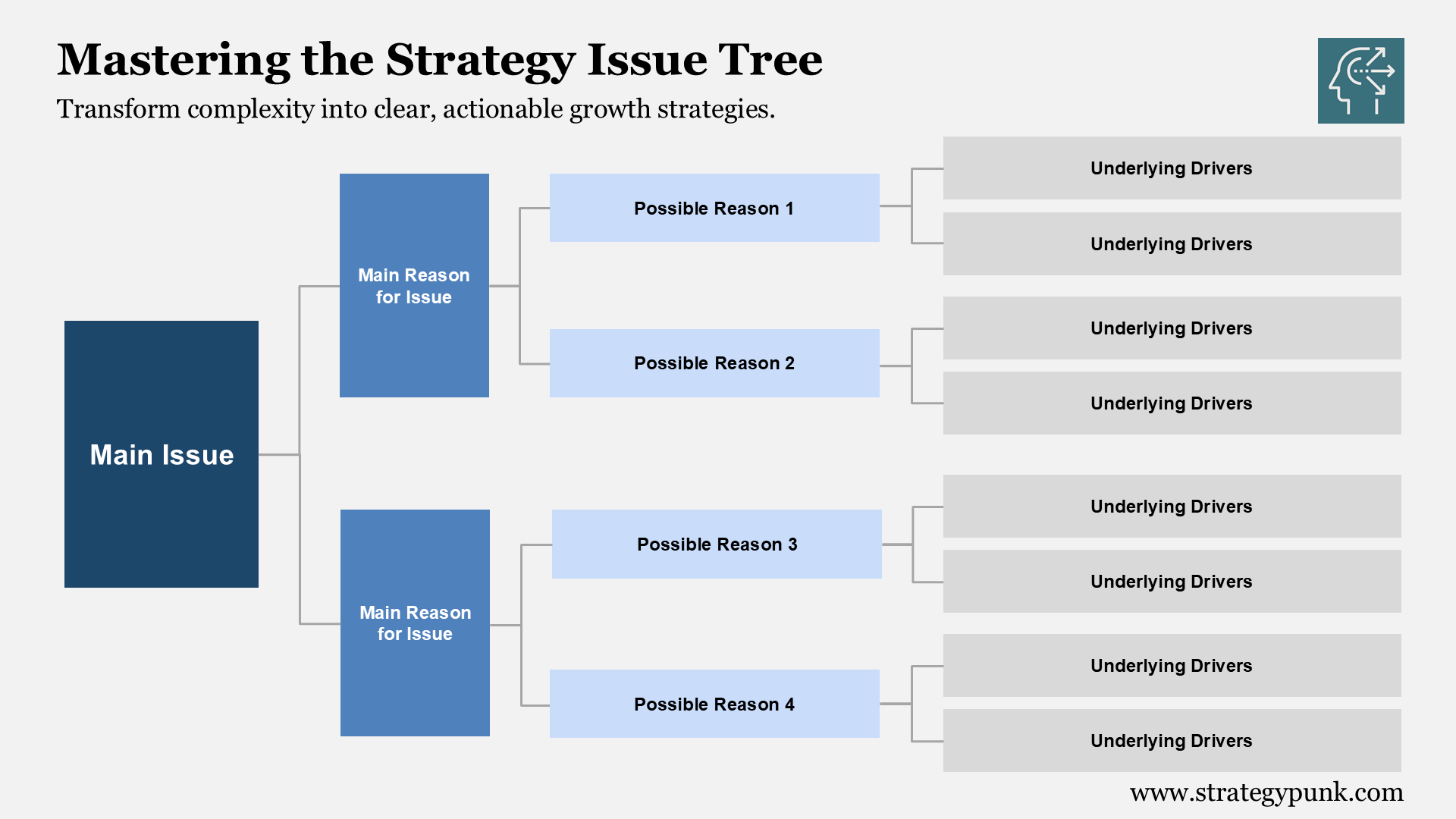Understanding the 4 Levels of Strategy (FREE PPT)
Learn to align your organization effectively using the 4 levels of strategy—corporate, business, functional, operational. Understand each level’s role in achieving strategic goals. Free PPT & PDF templates available.
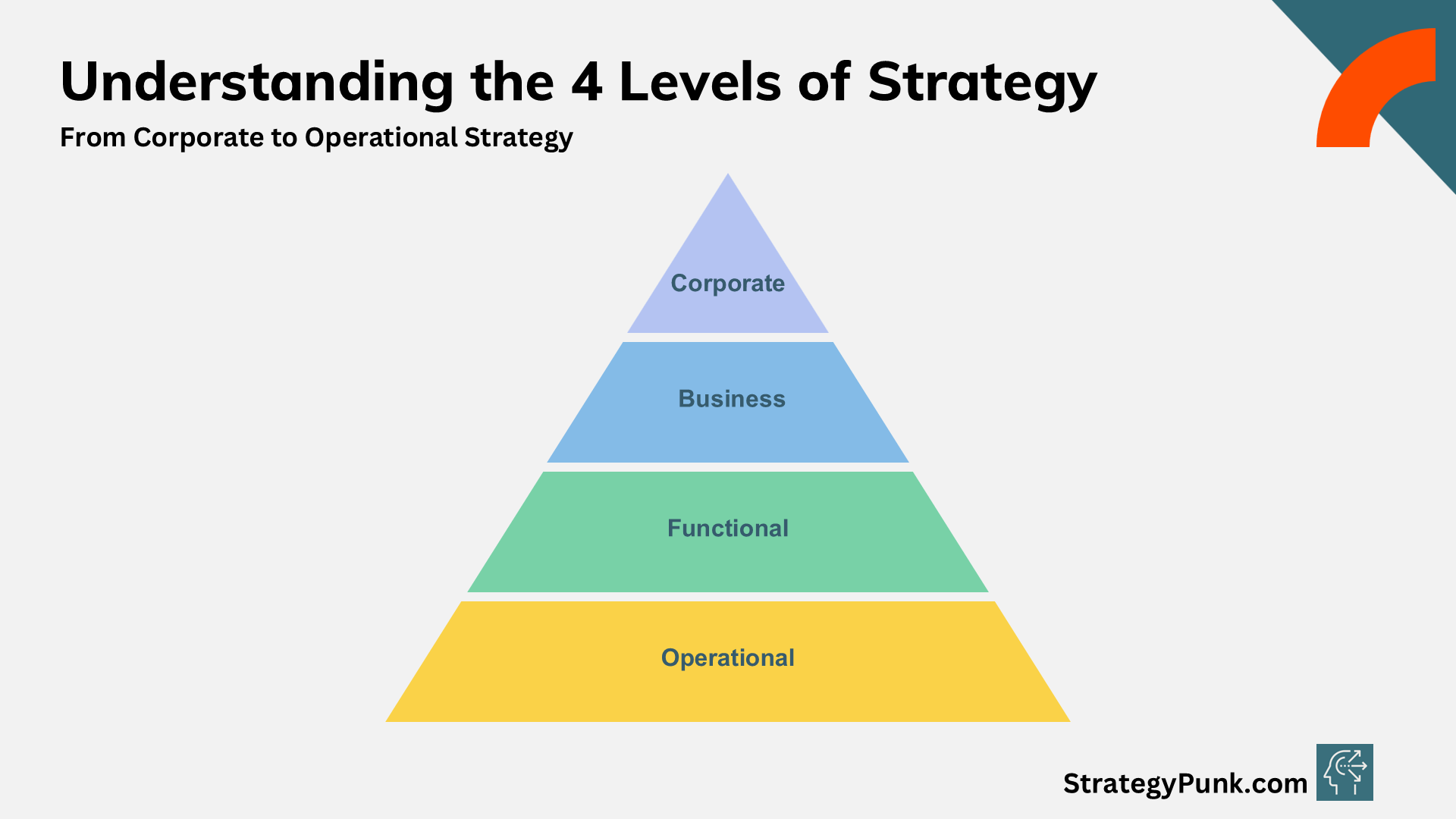
How to Align Your Organization from Top to Bottom
Companies must think strategically at multiple levels to succeed in today's complex business landscape.
However, many organizations need help to connect the dots between high-level corporate goals and everyday operational decisions. To truly execute strategy effectively, it’s critical to understand how different layers of strategy interconnect and support one another.
In this post, we’ll explore the 4 Levels of Strategy and why each is essential for aligning your organization’s resources, capabilities, and objectives toward sustainable competitive advantage.
Understanding the Four Levels of Strategy: From Corporate to Operational
1. Corporate-Level Strategy: The Big Picture
Every organization’s strategic journey starts at the corporate level. This is where leadership—typically the Board of Directors and C-suite executives—sets the long-term vision and direction for the entire company. Corporate-level strategy answers the fundamental questions: What business are we in? Where should we compete? How do we create value across our portfolio of businesses?
At this level, the critical tasks are to:
- Set the Vision: Define the organization's overall mission and long-term goals.
- Allocate Resources: Decide how to distribute capital, talent, and capabilities across various business units or product lines.
- Define Corporate Priorities: Develop the broad strokes of what will drive growth and competitive advantage, such as entering new markets, mergers and acquisitions, or major shifts in product lines.
A successful corporate strategy provides clarity and focus for the rest of the organization, ensuring that every business unit is working toward the same overarching goals.
2. Business-Level Strategy: Competing for Success
Once the corporate strategy sets the direction, each Business Unit (BU) must determine how it will compete effectively in its specific market or industry. This is where Business-Level Strategy comes into play. The central challenge is how we win in this particular market.
At this level, BU leaders focus on:
- Competitive Positioning: Deciding how to differentiate their offerings from competitors, whether through cost leadership, product innovation, or superior customer service.
- Customer Targeting: Identifying which market segments offer the greatest potential and how best to serve those customers.
- Sustainable Advantage: Developing core capabilities that allow the business unit to outperform competitors in the long run.
For instance, if you manage a business unit that sells consumer electronics, your business-level strategy might focus on being the industry's innovation leader by constantly bringing cutting-edge technology to market faster than competitors.
3. Functional-Level Strategy: Supporting the Business with Expertise
While business-level strategy concerns competing in the market, Functional-Level Strategy deals with how each department supports the overall business goals—such as marketing, finance, operations, or human resources. Each function needs to design a strategy that enables the business unit to deliver on its objectives effectively.
The focus of the functional strategy is to:
- Optimize Resources: Align departmental resources with the business strategy, ensuring efficiency and effectiveness in achieving strategic goals.
- Specialized Capabilities: Build the functions' capabilities to support business-level needs, such as developing cutting-edge marketing strategies, improving operational efficiency, or attracting top-tier talent.
- Cross-functional Collaboration: Ensure seamless cooperation across departments to avoid silos and enable coordinated execution.
Consider this the enabling layer—where specialized knowledge and skills are deployed to execute the business strategy. For example, the marketing team in a retail company might create campaigns tailored to specific customer segments identified in the business strategy. At the same time, operations streamline supply chains to deliver products faster and at lower cost.
4. Operational-Level Strategy: Making Strategy a Reality
At the bottom of the hierarchy, we have an Operational-Level Strategy where day-to-day activities happen. This is where strategic plans turn into actual execution. It’s the domain of Team Leaders and Team Members—those responsible for ensuring that the workflows, processes, and resource allocation are aligned to support higher-level strategic objectives.
The operational strategy focuses on:
- Execution: Ensuring that daily tasks and initiatives contribute directly to the business’s functional and strategic goals.
- Resource Optimization: Managing resources efficiently to ensure operational capacity meets demand and organizational priorities.
- Performance Management: Continuously improving processes and workflows to enhance efficiency and productivity.
For example, in a manufacturing firm, operational-level strategy may involve optimizing production schedules, managing supply chain logistics, or improving quality control processes to support broader business goals.
Comparison of the four different strategic levels
| Strategy Level | Purpose | Key Focus Areas | Example |
|---|---|---|---|
| Corporate-Level | Set the overarching direction and vision. | - Set Vision and Mission - Allocate Resources - Define Corporate Priorities | A conglomerate decides to enter the renewable energy market through acquisitions. |
| Business-Level | Define competitive strategy within markets. | - Competitive Positioning - Customer Targeting - Sustainable Advantage | A consumer electronics division focuses on leading through innovation in smart homes. |
| Functional-Level | Support business goals through expertise. | - Optimize Resources - Build Specialized Capabilities - Cross-functional Collaboration | Marketing develops targeted campaigns for new smart home products. |
| Operational-Level | Execute strategies through daily activities. | - Execution of Tasks - Resource Optimization - Performance Management | Production teams improve assembly line efficiency to reduce costs and increase output. |
How the 4 Levels of Strategy Work Together
It’s important to recognize that these four levels of strategy are not isolated silos. Instead, they represent a cascade where high-level corporate objectives filter down to business units, informing functional priorities and operational actions.
When each level of strategy is aligned, organizations are better able to:
- Maintain Focus: Everyone from the C-suite to frontline employees understands their role in achieving the broader goals.
- Drive Competitive Advantage: Business units and functions develop the specific capabilities they need to outperform competitors.
- Execute Efficiently: Operations are tightly linked to strategic priorities, ensuring the organization can deliver results on the ground.
In contrast, when these levels are misaligned, organizations may face confusion, inefficiency, and missed opportunities. This is why companies must treat strategy as an integrated system that connects vision to execution.
Key Takeaways for Leaders
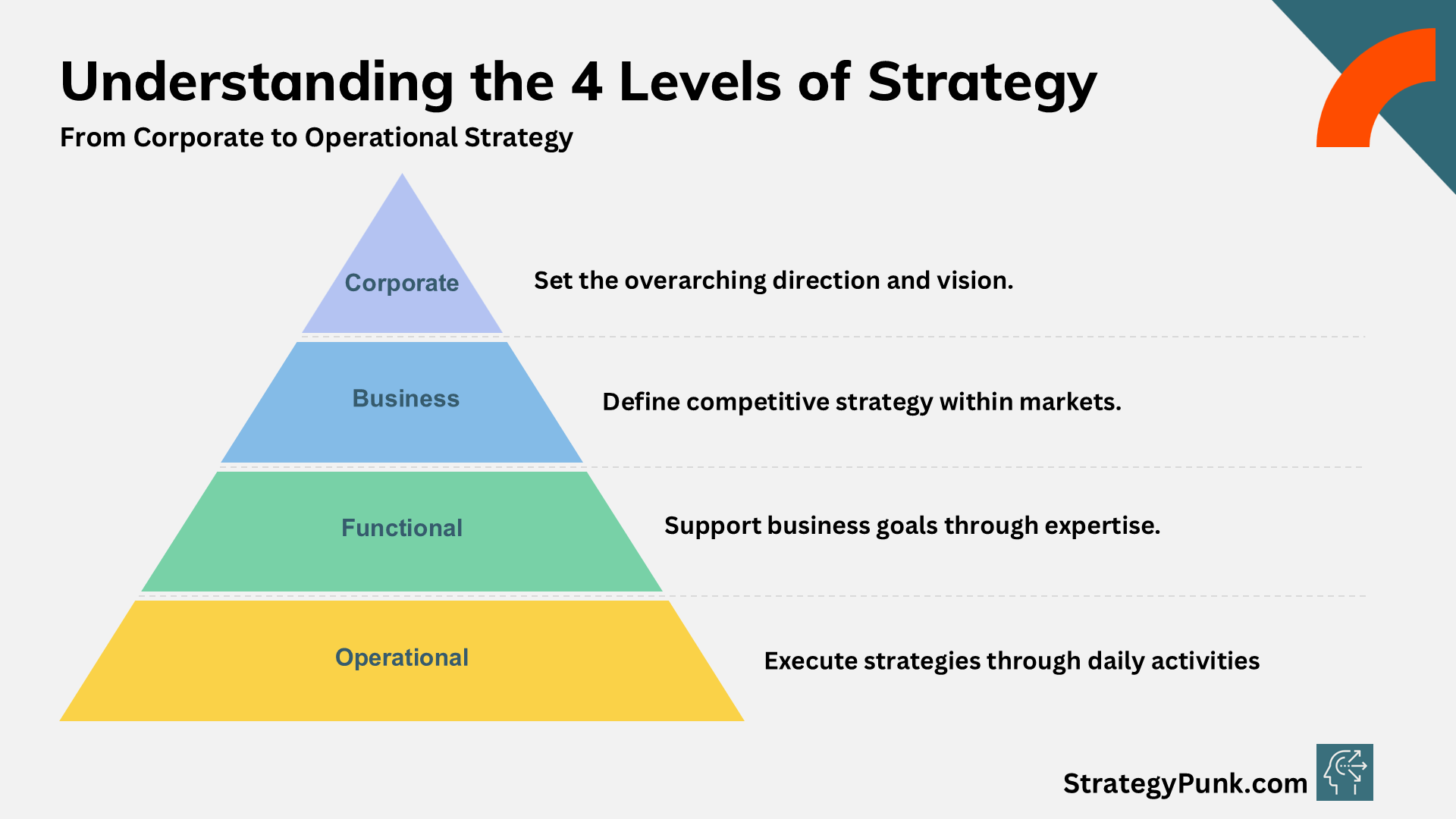
- Corporate-level strategy sets the organization's overarching direction, vision, and resource allocation.
- Business-level strategy determines how each unit competes in its market, focusing on differentiation and competitive advantage.
- Functional-level strategy enables departments to support business goals with specialized knowledge and operational efficiency.
- Operational-level strategy ensures that day-to-day activities align with higher-level strategic objectives, enabling smooth execution.
By understanding and managing these four levels of strategy, leaders can ensure that their organizations remain focused, agile, and competitive in an ever-changing business environment.
Following this approach can help your organization achieve strategic alignment at every level, ensuring that your vision translates into sustainable, real-world success.
4 Levels of Strategy PPT Template
free templates in ppt and pdf format
Stop wrestling with design tools. We've created the perfect template pack that does the heavy lifting for you.
We're offering a complete template bundle that turns heads and saves time – and yes, it's completely free!
⚡️ Grab Your Power Pack:
- Premium PowerPoint templates
- Coordinated PDF designs
- Drag-and-drop simplicity
- Instant professional polish
Download & Create - Zero Cost, Zero Hassle!
It is used by startups, loved by executives, and perfect for everyone in between.
Join over 5,000 professionals who've elevated their presentations and projects with our templates, whether you're a startup founder, corporate executive, educator, or creative professional.
Love Our Work? Consider Supporting Us! ❤️
While these templates are and will always be free, your support helps us continue creating high-quality resources for the community. If our templates have helped you save time or improve your presentations, consider buying us a coffee!
